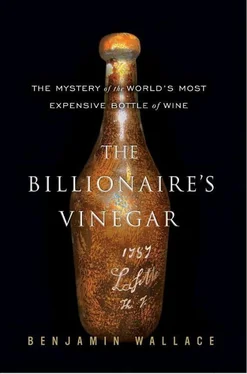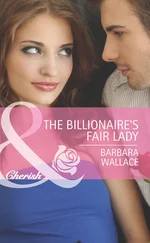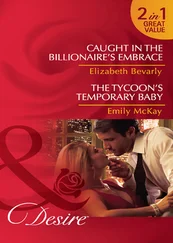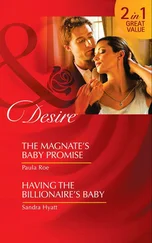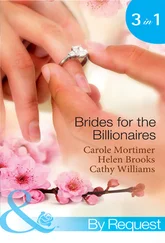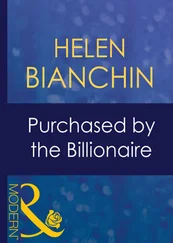Then, cruising the Web, Elroy discovered some papers written by a French scientist who had recently invented an unusual device he called a germanium detector.
THOUGH HE LIVED outside of Bordeaux, Philippe Hubert was an unlikely person to have become the world’s leading expert on anything having to do with wine. He had spent his career first as an experimental nuclear physicist, and more recently as a specialist in the ghostly subatomic particles called neutrinos. Unlike Bipin Desai, a theoretical physicist whose main activity outside of work was rare vintages, Hubert was a casual mealtime drinker. It was happenstance that led him to wine.
In the late 1970s, when the 8-mile Fréjus road tunnel was being constructed on the French-Italian border, a group of scientists had recognized a rare opportunity. Particle physicists are always on the lookout for bigger and better isolation chambers. So tiny and quiet and subtle are the particles and reactions they are measuring that it is impossible to detect them unless the world’s light and noise and tumult are shut out. With the tunnel being built, the scientists seized the chance to drill through the side of it into the alpine massif and hollow out the deepest underground lab in Europe, more than a mile beneath the summit. The location of the Subterranean Laboratory at Modane, accessible only from the Fréjus tunnel, made for some hairy circumstances, including the need to play Frogger when parking inside the tunnel and crossing the road to the lab entrance without being run over.
The other part of lowering “the background,” as physicists call it, is using lab equipment fabricated from materials with the lowest possible radioactivity. Around 1990, Philippe Hubert and some fellow scientists set about isolating the best materials; to do so, he in turn needed an exquisitely sensitive detector to identify them. This was how he came up with the germanium detector.
It consisted of a supercooled metallic crystal sheathed in “archaeological lead” salvaged from a Roman ship sunk two thousand years earlier off the coast of Brittany. The hypersensitive crystal was capable of detecting the subtlest radioactive signals, while the inert lead blocked out other particles that might be distracting. By measuring the pulses generated in the crystal when it was put near radioactive material, it was possible to detect both the amount and kind of radioactivity.
In the late 1990s, Hubert began to wonder if there might not be other uses for his detector. He shared a more modest, less sensitive detector, on the campus of the University of Bordeaux, with the French agency charged with “répression des fraudes.” Bernard Medina, an analytical chemist who ran the regional lab for the agency, spent his time testing food products—mainly wine—to assure both their authenticity and, post-Chernobyl, their lack of contamination. Medina and his colleagues studied chocolate, coffee, prunes, salt. They analyzed regional cepes, and sniffed out an imposter batch from abroad. Once, Medina helped solve a murder case by establishing that a vinegar stain on a shirt came from a particular bottle.
He and Hubert were often in the lab at the same time, and the two hit it off. “Like two guys at a garage,” Medina recalled. “He had a brand-new Lamborghini; I had a beat-up Ferrari. We each needed spare parts.” Over the next few years, the Bordeaux native Medina taught the Brittany native Hubert about wine, and Hubert taught Medina about radioactive physics. As they traded notes, Medina wondered if the germanium detector could help to date wine.
With a bottle of wine, using the detector wasn’t as simple as putting the bottle next to the crystal. The shape of the bottle, the radioactivity in the glass, and the dilution of the datable material in water combined to make it unlikely that gamma rays emitted by the material would be strong enough for the detector to sense. Opening the bottle and reducing the wine to ashes would, on the other hand, yield a workable sample. At the underground facility in Modane, Hubert tested three bottles of wine, from three different vintages, and found that the concentration of cesium-137, a radioactive isotope, varied with each vintage.
He and Medina were surprised, and they decided to expand the experiment. They gathered bottles from various well-known modern vintages—not an easy task, even though they were in Bordeaux, because of the high prices—and tested them. Each of these, too, revealed its own distinctive cesium concentration. Hubert plotted a chart, showing the levels of cesium in these wines from 1950 up to the present.
Like tritium, the element present at 1962 levels in Hans-Peter Frericks’s Jefferson bottle, cesium-137 is man-made. It didn’t exist in nature in significant concentrations prior to the first hydrogen bomb test, in 1952. It then rose rapidly until the 1963 atmospheric test-ban treaty, after which it declined. It spiked again in 1986, following Chernobyl. Hubert now had a yardstick for dating wine, at least wine made since 1952.
In 2001, Medina presented Hubert with a real-world test of the wine-dating technique. In 1999, conveniently just in time for Millennial celebrations, an improbable number of bottles of 100-year-old first growths had flooded the French and Belgian markets. People in Bordeaux were skeptical. The negociant Barton & Guestier tipped off Château Margaux, which went to the fraud office. The fraud office then obtained six bottles each of “Lafite 1900” and “Margaux 1900,” and Hubert administered his cesium test to one of each. He did this in Modane, which took six hours, two planes, and a train to reach. He didn’t destroy the wine, but poured each into a container surrounding the crystal. Within ten minutes, in each case, he knew it was fake, because the distinctive cesium curve on his computerized spectrum revealed it to date from the modern era. The two bottles showed different levels of cesium, though. At this point Hubert sent two more of the bottles to be carbon dated. The results were almost identical, confirming the validity of the cesium test. But the different levels of cesium between the Margaux and the Lafite puzzled Hubert.
He thought it a pity to reduce potentially priceless wine to ashes, and a pity to pour it into a container, as he had been doing. Either way meant opening the bottle. Testing a closed bottle of wine was a less sensitive method, but he and Medina decided to give it a try. To their surprise, it worked. They tested the remaining bottles without opening them. All had different cesium levels. It was clear that the forger was mixing different wines, but for his base wine he had chosen the worst possible vintage from a radioactive standpoint: 1963, the year with the highest concentration of cesium in history. When the man, a Belgian national, was arrested, he claimed he had merely topped up true 1900 wine with younger wine from the same château.
Having solved that crime, Hubert developed something of a reputation for his wine-detection skills. The Bordeaux trade group was concerned at first about all this public talk in which the word radioactivity appeared in the same sentence as their sublime product. But ultimately they supported Hubert’s dating work. Hubert was only a year away from retiring, and he enjoyed the new and unexpected sideline he had stumbled into so late in his career. It brought him into contact with a whole new group of people and a whole new subject.
He had lived with the curse of a job that could not be explained to others or, at least, understood by them. Once, with a group of journalists, he was embarking on an explanation of his field by saying that “a neutrino is a particle that—” when someone interrupted to ask what a particle was. Neutrinos might be interesting, people would say, but how useful were they? Wine, on the other hand, everybody understood, and everyone was interested in. It was also a lot easier to get funding for. Commercial interests hinged on this work. And if, along the way, it was a palatable way to introduce people to a little thing called the neutrino, well, Hubert couldn’t argue with that.
Читать дальше
